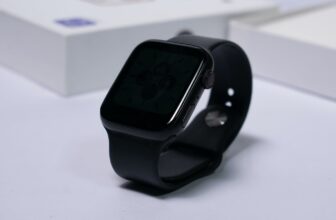[ad_1]
Just days away from banning its smartwatches in the United States, Apple is planning a rescue operation for its $17 billion business that includes software fixes and other potential workarounds.
Masimo’s engineers are rushing to change the algorithm of the device that measures users’ blood oxygen levels, but Masimo claims the feature infringes on its patents. The company is tweaking the way the technology determines oxygen saturation and presents the data to customers, according to people familiar with the study.
This is a high-stakes engineering effort unlike anything Apple has undertaken before. The iPhone maker’s products have previously been banned in certain countries due to legal disputes, but the restrictions will hit Apple, one of its home country’s biggest producers, right at Christmas. . Barring a last-minute veto by the White House, the International Trade Commission’s ban would go into effect on Dec. 25.
Apple could reach a settlement with Masimo, a route the company typically doesn’t prefer. And the two companies don’t seem to be involved in that regard. For now, Apple is trying to modify its technology and gain support from regulators.
If the ban is in effect, Apple is working on various legal and technical options. Preparations have already begun for changes to the store. The company sent new signs to retailers promoting the Apple Watch without featuring photos of the Series 9 and Ultra 2, which are subject to a sales ban. The company’s low-end SE watches are still available.
Apple will stop selling the banned watches on its website on Thursday and then remove them from about 270 physical stores by December 24th.
Based on Apple’s internal efforts, the company appears to believe that software changes alone, rather than more complex hardware overhauls, will be enough to get the device back on store shelves. But the patents at the center of the dispute primarily relate to hardware, such as a method for shining light onto a person’s skin to measure the amount of oxygen in their blood.
An Apple spokesperson said the company is working on submitting a workaround to U.S. Customs, which is responsible for approving changes to put products back on the market.
Massimo said software fixes alone will not be a sufficient solution. “The hardware needs to change,” the medical device maker said.
The ITC ban takes the form of import restrictions that make it impossible for Apple to sell the device in the United States. The company relies on overseas suppliers for watch parts and assembly.
Evan Zimmerman, co-founder and chief executive of Edge, which makes patent drafting software, said such disputes are usually resolved before they get to this point.
“These types of disputes that lead to import restrictions are rare and are often used as leverage in settlement negotiations,” he said. Zimmerman said it may be difficult for Apple to resolve the dispute with software tweaks, given the breadth of Masimo’s patents. But Apple could make a plausible case that the software controls the behavior of the device, he said.
The company is working on both hardware and software fixes, but it will take time to actually bring the new technology to market. Apple’s internal software testing process is time-consuming, and for good reason. The company needs to ensure that the changes don’t break functionality on other smartwatches. Considering medical purposes, adjustments may require additional testing.
In a scenario where Apple needs to remove hardware from devices, it could take at least three months to produce and ship new models, according to people familiar with the company’s operations. And that doesn’t take into account how long it would take for customs to approve the move.
Blood oxygen functionality was first added to Apple Watch in 2020 with Series 6 models. At the time, the coronavirus pandemic was raging, and some doctors were using blood oxygen levels to assess the effect the virus was having on a patient’s ability to breathe.
This feature monitors a person’s levels throughout the day. Users can also retrieve current readings. This will take approximately 15 seconds. Many patients ask for her 95%-100% level.
This feature was also included in Apple Watch Series 7 and Series 8. Apple discontinued the Series 7 in favor of the new model, but the Series 8 remains available as a refurbished device. Once the ban goes into effect, those sales will also have to stop.
The ITC ban applies only to Apple’s direct sales channels, so third-party retailers such as Walmart Inc., Best Buy Co., and Target Corp. can continue to offer the device. Walmart and Best Buy said Monday that neither company intends to shut down operations.
Apple is increasingly leveraging health and safety features to sell its smartwatches, making its lineup a key growth driver in recent years. Analysts estimate Apple’s revenue will be $16.9 billion in fiscal 2023, up from $9.1 billion five years ago.
That’s a fraction of the $200 billion the iPhone generated, but the watch also helps keep people locked into the Apple ecosystem.
It’s unclear whether the White House will ultimately grant Apple a reprieve. Administration officials said U.S. Trade Representative Katherine Tai is handling the review and carefully considering all elements of the dispute.
The White House has the power to veto ITC decisions, and the Obama administration did just that in 2013 by banning the iPhone in the United States. However, the ruling stemmed from a patent dispute with South Korea-based Samsung Electronics, and because Masimo is based in Irvine, California, the government would have to choose the U.S. company over others. Become.
Masimo said in a statement that the ITC’s decision “must be respected.” He said the ban “demonstrates that even the most powerful companies in the world must abide by the law.”
[ad_2]
Source link







